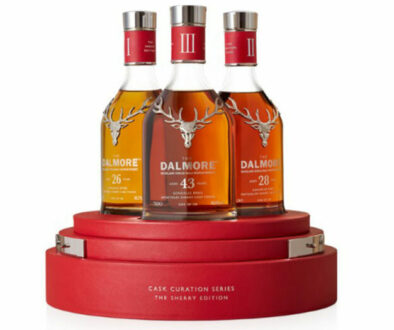One of the most prestigious series of single malt whiskies ever released, the Glenfarclas Pagoda Series is without question amongst the most complex, spectacular, and luxury collections of bottlings produced by any distillery. The Glenfarclas Pagoda Series pays tribute to the pagoda-style kiln invented by Charles Doig over 130 years ago, an integral part of historic malt whisky production, and now a Scotch whisky icon. As the series features the two oldest Glenfarclas whiskies ever released and presents the bottles in individually crafted crystal decanters finished with precious metal and gemstones, Glenfarclas’ Pagoda Series have become bottlings that only investors and serious collectors can afford to purchase. As the worldwide market for very well-aged and traditionally produced whisky vintages continually develops, bottlings in the Glenfarclas Pagoda Series have become highly sought after expressions of distilling history.
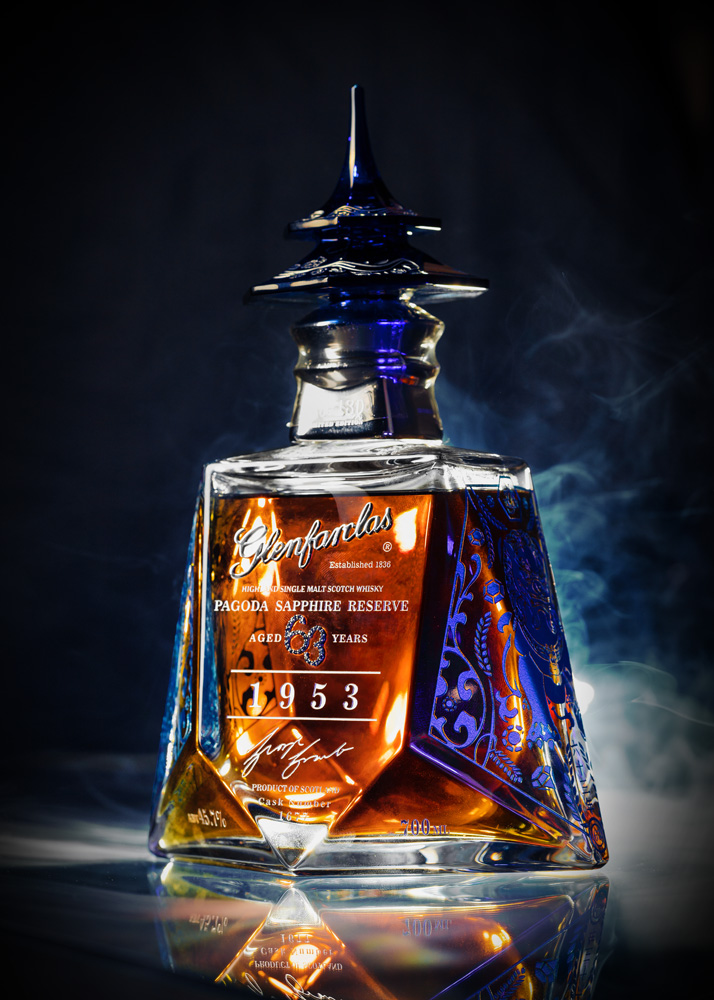
Charles Doig: Whisky’s Pagoda Architect
The classic architectural feature of any malt whisky distillery, the Chinese-style pagoda kiln heads sitting atop the malthouses have become the symbol of Scotch whisky distilling throughout the world. Pagoda tops were originally designed and created by Charles Doig of Elgin, Scotland’s foremost architect and industrial engineer of whisky distilleries, who designed the structures and distilling equipment including stills at 56 Scottish distilleries during his career. In the late 19th century, a majority of Scottish distilleries still malted barley on-site, including kilning it with peat or other types of fuel – this led to a considerable danger of fire, and a well-ventilated malthouse was essential.
Discerning a means of improving ventilation standards, Doig designed a new structure, initially known as a ‘Doig Ventilator’, a kiln chimney providing a better ‘draw’ for hot air from the fire beneath, and allowing air to exit the malthouse roof in all directions. Inspired by the traditional architecture of Asia, namely the multi-tiered pagoda tower, Doig’s kiln ventilator resembled the topmost pagoda tier, characterised by distinctive curved eaves. In 2016’s issue Scotch Whisky magazine informed readers Doig’s structure was not a pagoda, but rather a cupola – although the ‘pagoda’ name persists.
The first ‘Doig Ventilator’ was installed at the Dailuaine distillery in 1889, and so the distillery pagoda was born. Amid the late Victorian distilling boom, Doig’s pagoda ventilator became an iconic trademark installed at distilleries across Scotland including Highland Park, Ardbeg, and Aberlour. As very few Scottish distilleries continue to malt barley onsite, the majority of pagodas have now been rendered decorative relics of a bygone distilling era. Doig’s iconic feature continues to endure, with many new and remodelled distilleries equipped with purely ornamental pagodas for tradition’s sake.
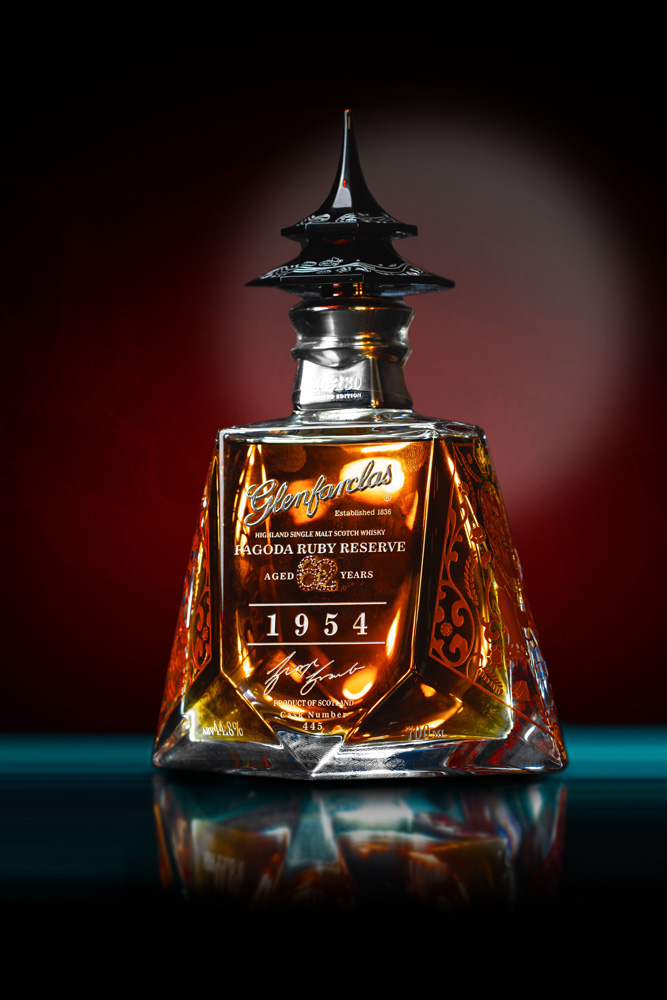
Glenfarclas Pagoda Series: Origins and Creation
In 2015, The Whisky Corporation (an Asian spirit distributor) and Glenfarclas began a project to create a series of complex and spectacular limited releases for the collectable whisky market, bottled from some of the oldest distillery stocks and presented in individually created decanters, intended as the most prestigious and legendary Glenfarclas bottlings ever released. The inspiration for this series was a Scotch whisky icon – Charles Doig’s pagoda kiln structure. A Doig ventilator pagoda kiln was installed above Glenfarclas’ malthouse in 1896 when the site was rebuilt as a modern Victorian distillery. Glenfarclas’ on-site distillery floor maltings continued until 1972 when the maltings including the pagoda kiln were decommissioned. When Glenfarclas opened one of Scotland’s first whisky distillery visitor’s centres in 1973, the distillery’s iconic pagoda was integrated to sit above the entrance. Comprised of single malt vintage whiskies which predate the 1972 decommissioning of Glenfarclas’ pagoda kiln – the Glenfarclas Pagoda Series was born.
Distilled across three decades of the last century, each Pagoda Series vintage represents a piece of Glenfarclas’ distilling history. Glencairn Crystal was commissioned to produce the finest crystal cut decanters, with each decanter individually hand blown using 30% lead crystal renowned for its ultra-clarity. The Glenfarclas Pagoda Series decanters were decorated using specialist engraving techniques, and feature intricate side graphics of Chinese Guardian Lions which perfectly compliment the pagoda styling, and are deep infilled with a colour corresponding to the release. Graphic design work on the decanters was the result of a collaboration between the Glencairn Crystal design team and creative experts from Asia.
Reflecting Glenfarclas’ pagoda heritage, each decanter is accompanied by a hand-crafted pagoda top stopper to crown the decanter. These pagodas feature a unique design, having been crafted in two distinctive parts to enable ease of packing and uncorking. The pagodas work by creating a magnetic connection between the cork top, and a matching magnet concealed in the base of the pagoda design. This unique magnetic function means the pagoda can easily be removed when uncorking the whisky and replaced securely afterwards. The Pagoda Series decanters use Spanish cork closures for the highest possible quality grade. Each cork was created in Spain from almost flaw-free cork wood that can only be harvested once every seven years. Every cork is set within a solid silver top, with a concealed magnet designed to receive the unique pagoda top.
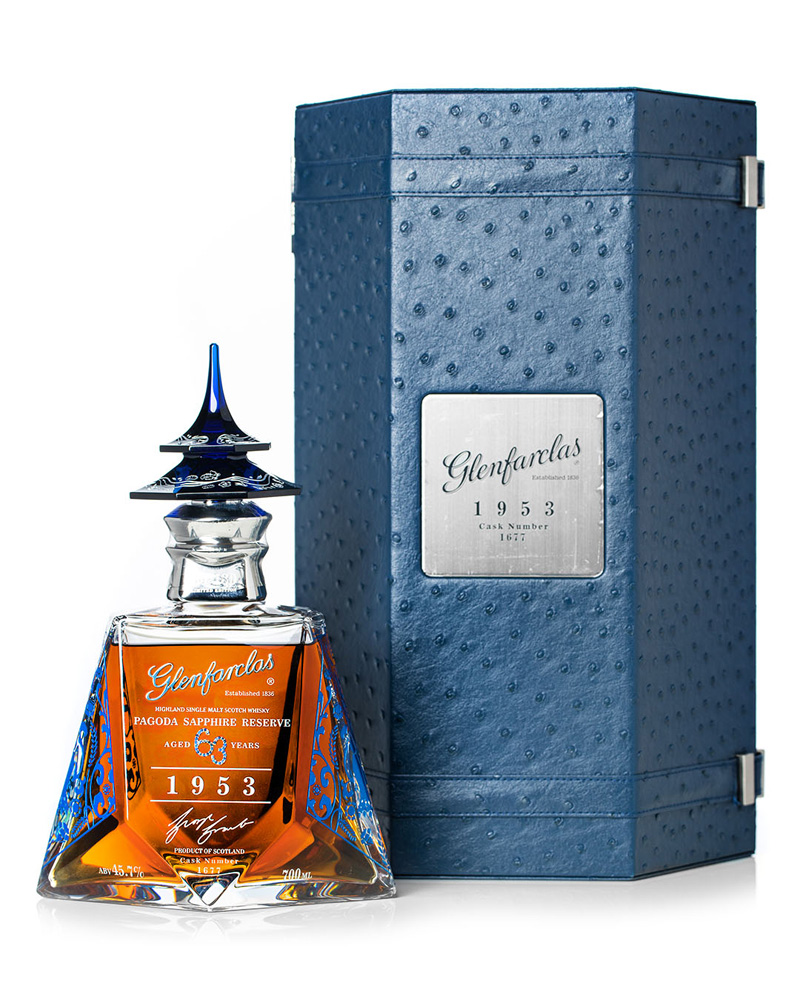
Glenfarclas Pagoda Reserve Trilogy
In 2016, the first bottlings in the Glenfarclas Pagoda Series were released – a trilogy of whiskies themed around the precious metals of gold, silver and bronze. A cask selection panel, including Glenfarclas’ George Grant and ‘Keeper of the Quaich’ Stephen Notman, explored the Glenfarclas distillery’s finest stock reserves, selecting whiskies distilled across three decades. The Glenfarclas vintages chosen for the trilogy, include 1971 (43-Year-Old – Bronze), 1967 (48-Year-Old – Silver), and 1956 (59-Year-Old – Gold). Bottled in 2015, the Pagoda Reserve Trilogy was released the following year, when all the Glencairn Crystal decanter bottles had been finished with precious metals of brass, silver and gold. The Pagoda Reserve Trilogy bottles were presented in decanters depicting intricate side designs of Chinese Guardian Lions, deep infilled with bronze, silver or gold colouring corresponding to the release. Precious metals were used to create detailed finishing, including metal collars around the bottlenecks engraved with individual numbers and hallmarks, while age statement numbers were produced and affixed to the front of decanters. Pagoda tops were also created from precious metals to crown the decanters, shaped to be reminiscent of the pagoda once an integral part of Glenfarclas’ distillery architecture.
Only 100 limited edition Glenfarclas Pagoda Reserve Trilogy sets were created, alongside a further 10 Magnum Limited Edition sets presented in larger 1.5-litre decanters. The Pagoda silver reserve cask also produced an additional 30 Magnum Collector’s Edition 1.5 litre bottles which were available for collectors to purchase individually. All of the Pagoda magnum bottlings and 90 Trilogy Reserve sets were secured by collectors through pre-order or bottle allotment before release. The Pagoda Reserve Trilogy sets initially retailed for SGD 54,600 (approximately $39,100 USD or £29,800 GBP).
Amongst some of the oldest limited-edition Glenfarclas expressions at the time of release, the Pagoda Reserve Trilogy revealed the depth of Glenfarclas’ aged stock available to bottle for the collectable and luxury whisky market. The Pagoda Gold Reserve (1956 59-Year-Old) briefly held the record for the oldest Glenfarclas release, surpassing the Glenfarclas 1953 58-Year-Old (limited to 97 bottles), which had previously been released in 2012.
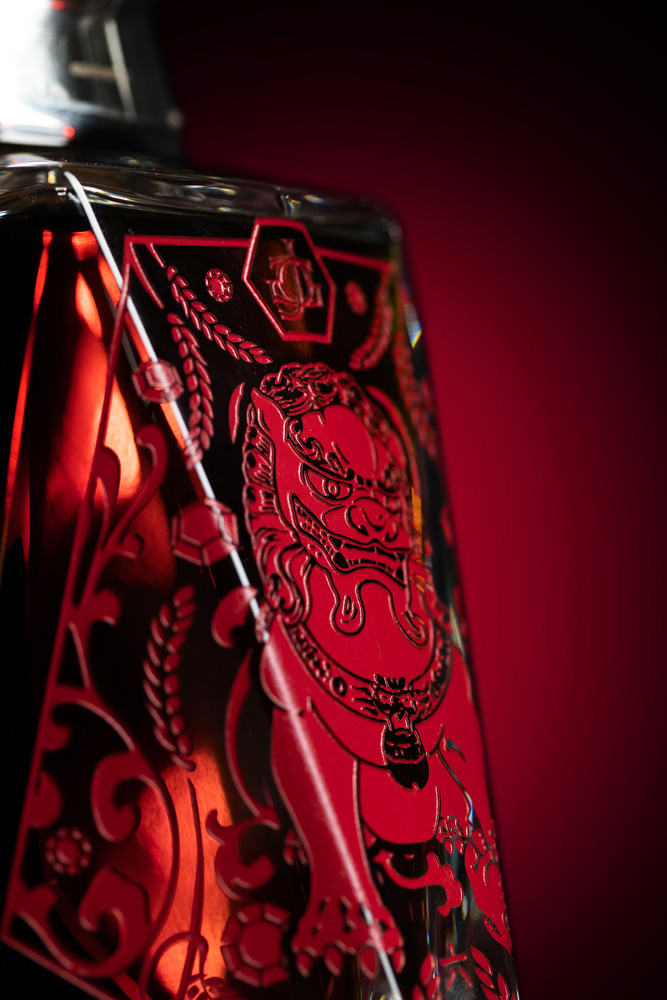
The Final Pagodas: Glenfarclas’ Ruby and Sapphire Reserve
The final expressions in the Glenfarclas Pagoda Series were released in 2020 – a pair of bottlings themed around precious stones, the Ruby Reserve and Sapphire Reserve. The cask selection panel selected casks from the oldest available stocks in Glenfarclas’ distillery warehouses, choosing Glenfarclas vintages distilled in 1954 (62-Year-Old – Ruby), and 1953 (63-Year-Old – Sapphire). Bottled in 2017, the extent of intricate finishing required for the decanters meant the Pagoda Ruby Reserve was not released until early 2020, with the Sapphire Reserve launched later the same year. Presented once more in Glencairn Crystal decanters depicting the Chinese Guardian Lions design, deep infilled with either dark red or blue colouring, these reserve bottlings also featured pagoda-shaped stoppers hand-crafted from coloured crystal and engraved with graphics representing the ancient Silk Road. A combination of limited and collectors editions of each reserve bottling were produced, in both regular 70cl and 1.5-litre magnum decanter sizes. Limited edition bottlings of the Ruby and Sapphire Reserve are finished with individually engraved numbered and hallmarked solid silver bottle neck collars, while the collector’s edition decanters use gold plated collars. The age statement on each decanter was embedded with either 34 rubies or 36 sapphires to construct the numbers 62 or 63 respectively, highlighting the age of the whisky. Glencairn Crystal records a staggering 11,000 sapphires were ordered to create the Sapphire Reserve age statements, with each stone individually selected for size and dark blue shade to compliment the blue crystal pagoda stopper.
The Pagoda Ruby Reserve 1954 (62-Year-Old) became the oldest Glenfarclas bottling available upon release, displacing a limited-edition expression released in 2019, a Glenfarclas 1959 60-Year-Old (which produced only 105 bottles). The bottle was, initially, available only from specialist online whisky retailers in the UK, including The Whisky Exchange and Master of Malt. The Ruby Reserve was available in two editions, the limited edition silver finish, which included 180 70cl bottles and 62 magnums, and the Collector’s Edition Gold finish with only 50 decanter bottles, and 50 magnums available. Original retail prices for the Ruby Reserve varied from £22,716 (ex VAT) for a limited-edition silver finish decanter, to £53,546 (ex VAT) for the collector’s edition gold magnum.
Completing Glenfarclas’ prestigious Pagoda Series, the Sapphire Reserve 1953 (63-Year-Old) is, at the time of writing, the oldest Glenfarclas whisky ever released, and was bottled from one of the last 1953 distilled casks in the distillery warehouses. Launched through specialist online whisky retailers worldwide, the Sapphire Reserve was available in two editions including the Limited-edition silver finish, which numbered 180 70cl decanters currently retailing for £28,500, and 63 1.5 litre magnums currently priced at £61,000. In the Sapphire Reserve Collector’s Edition Gold, only 45 1.5 litre magnum decanters were ever produced – and currently retail for £67,000 in the UK whisky market.
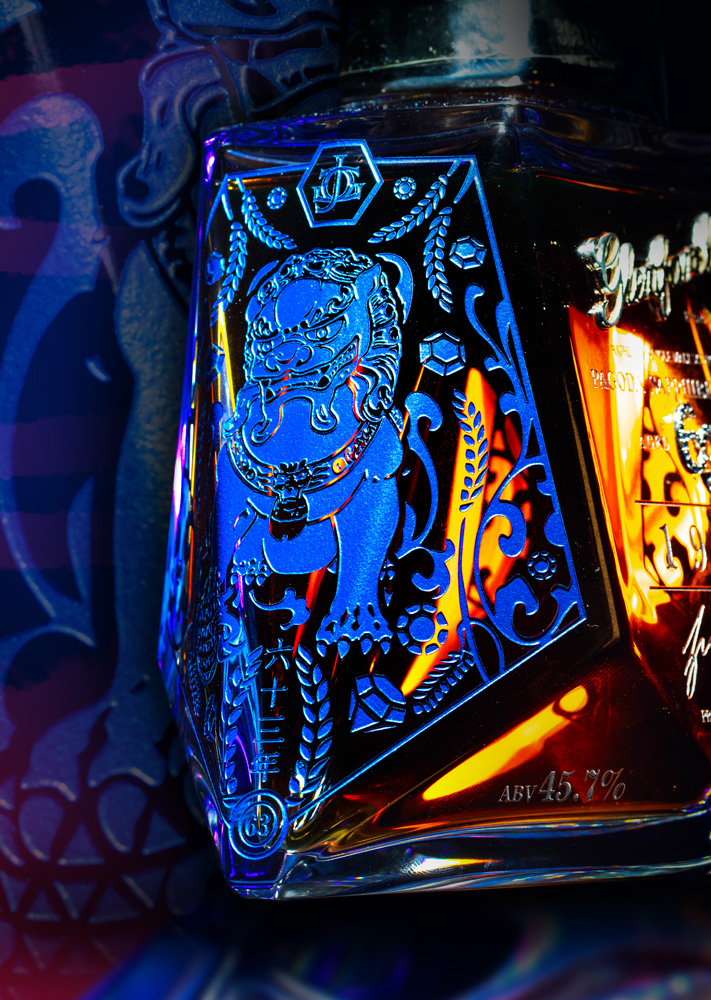
A summary of the bottlings in the Pagoda Series can be found below:
- Glenfarclas Pagoda Reserve Trilogy, 100 x 70cl sets, 10 x 1.5-lire magnum sets, originally released for around £29,800
- Glenfarclas 1971 43 Year Old Bronze, 51.4%
- Glenfarclas 1967 48 Year Old Silver, 51.3%
- Glenfarclas 1956 59 Year Old Gold, 43.5%
- Glenfarclas Pagoda Series
- Glenfarclas 1954 62 Year Old Ruby Reserve, 70cl, 44.8%, 180 x 70cl, 62 x 1.5-litre magnums, 50 x 70cl Collector’s Edition Gold, 50 x Collector’s Edition Gold 1.5-litre magnums
- Glenfarclas 1953 63 Year Old Sapphire Reserve, 70cl, 45.7%, 180 x 70cl, 63 x 1.5-litre magnums, 45 x Collector’s Edition Gold 1.5-litre magnums
Glenfarclas Pagoda Series Timeline
1836 Robert Hay founds the Glenfarclas distillery at Recherlich Farm.
1865 Robert Hay passes away, and Glenfarclas is purchased by John Grant and his son George for £511.19s.0d.
1870 John and George Grant found J. & G. Grant Ltd to operate Glenfarclas.
1889 Architect Charles Doig devises and installs the first Doig Ventilator / Pagoda kiln head at the Dailuaine distillery.
1896 Glenfarclas is rebuilt as a modern Victorian distilling plant, including a Doig Ventilator / Pagoda kiln head.
1972 Glenfarclas’ on-site distillery floor maltings and Pagoda kiln are decommissioned.
1973 A visitor’s centre is opened at Glenfarclas, featuring the Pagoda kiln above the entrance.
2015 Glenfarclas Pagoda Series Reserve Trilogy are bottled, and decanters prepared for release.
2016 Glenfarclas Pagoda Series Reserve Trilogy are released:
Pagoda Reserve Trilogy Bronze – Glenfarclas 1971 43-Year-Old (100 Limited Edition bottles, 10 Magnum Limited Edition 1.5 litre bottles).
Pagoda Reserve Trilogy Silver – Glenfarclas 1967 48-Year-Old (100 Limited Edition bottles, 10 Magnum Limited Edition 1.5 litre bottles, 30 Magnum Collector’s Edition 1.5 litre bottles).
Pagoda Reserve Trilogy Gold – Glenfarclas 1956 59-Year-Old (100 Limited Edition bottles, 10 Magnum Limited Edition 1.5 litre bottles).
2017 Glenfarclas Pagoda Series Ruby Reserve and Sapphire Reserve expressions are bottled, and decanters prepared for release.
2020 Glenfarclas Pagoda Series Ruby Reserve and Sapphire Reserve are released:
Pagoda Ruby Reserve – Glenfarclas 1954 62-Year-Old (180 Limited Edition bottles, 50 Collector’s Edition bottles, 62 Magnum Limited Edition 1.5 litre bottles, 50 Magnum Collector’s Edition 1.5 litre bottles).
Pagoda Sapphire Reserve – Glenfarclas 1953 63-Year-Old (180 Limited Edition bottles, 63 Magnum Limited Edition 1.5 litre bottles, 45 Magnum Collector’s Edition 1.5 litre bottles).
Text content
Text content
Text content
Text content
Text content


